IMPower Fund Forum – one of the industry’s largest events – takes place June 27-28 at The Grimaldi Forum, Monte Carlo, Monaco.
Monaco is set to host IMPower Fund Forum, more traditionally known as FundForum International – or just “FundForum” – again this year.
The event features more than 1,000 delegates and many more attendees from Europe’s funds industry and further afield. It takes place over two days.
Agenda content spans fund distribution, investment strategy, technology and operations, not forgetting regulation and ESG.
Below, Funds Europe has received commentary from some of those taking part in the conference about topics they are involved in, including the importance of distribution partnerships, to democratising private markets. Funds Europe has also received commentary from a number of industry experts about topics relevant to the conference, including liquidity and private markets.
Philippe Seyll, CEO, Clearstream Fund Centre
Clearing up post-trade problems
Smart use of new technology is fundamental to reducing complexity and increasing efficiency for all stakeholders.
Many of the problems in the post-trade area relate to long intermediary chains, reconciliation efforts and system gaps – especially a lack of communication between systems. These add unwanted complexity in fast-moving environments. So, how can we employ technology to improve outcomes for all stakeholders?
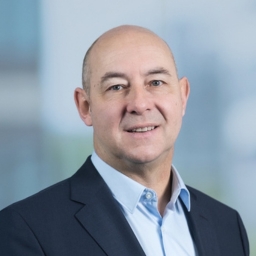 Missing link
Missing link
First, new technology can supply the missing link to bring asset managers closer to investors through direct distribution and can also provide new ways of approaching investors who move independently.
Second, platforms like Clearstream Fund Centre are looking to battle the complexity by centralising trade flows for mutual and alternative funds, aggregating distribution agreements, providing proper data quality and reducing overall investment barriers.
Third, smart contracts built into the tokenised fund share itself support streamlining and allow a fully compliant pre-selection of investment funds for each individual investor profile.
We must use new technology intelligently to provide solutions without adding further problems. Improved interoperability between systems and efficiency will remain the principal areas of focus while ensuring the reliability and safety of financial networks. At Clearstream, we believe it is important to avoid innovation happening in isolation and facilitate stronger collaboration between participants so as to improve outcomes in a sustainable way for the entire financial market.
Philippe Seyll takes part in the panel ‘New ways technology can improve outcomes for all stakeholders’. The panel will consider how to protect business and “empower investors more effectively in complex markets with many unknowns”, according to the agenda.
Other participants will be Joe Saliba, deputy CEO, Caceis, Michael Reinhard, CEO, Universal Investment, and Georgia Stewart, CEO, Tumelo.
Jose Cosio, global ex-us head of intermediary distribution, Neuberger Berman
An asset class not only for the wealthy
For a large part of the investor base, private equity has been considered an asset class only accessible to large institutions and very high-net-worth individuals or families. With groups now looking to complement traditional institutional access, the democratisation of private equity has been gathering pace.
At Neuberger Berman, we have seen continued growth of our global private equity capabilities within the intermediary space, having launched three successful private equity Eltifs [European Long-term Investment Funds] in as many years, as well as offerings in the US.
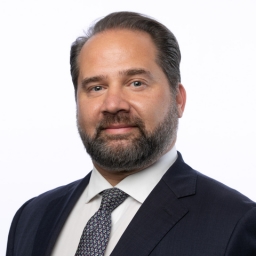 Useful diversifier
Useful diversifier
The investment industry has seen that private equity can offer very attractive returns with lower volatility through market cycles than public markets, and the longer time horizon of the investments can be a useful diversifier for long-term savings. The flipside is that clients must understand that access to capital invested will be limited, and they should therefore plan carefully and adequately for expected and unexpected short-term liquidity needs. Transparency, education and clarity are at the heart of what we aim to provide investors.
More firms who have traditionally focused on public markets will attempt to break into alternatives – particularly private markets. We are fortunate to have made this transition many years ago, and the two disciplines are now very culturally integrated. Take it from us – it takes a long time for a business to adjust and educate itself in new specialisms and channels.
Jose Cosio will take part in the panel ‘Democratisation of private markets’. The panel will examine the creation of investment solutions to meet “growing demands for private market strategies” in wealth management, including new innovations for general partners, and demand on direct-to-consumer platforms.
The panel will be moderated by Justina Deveikyte, director, European Institutional Research at Cerulli Associates, and will also feature Tom Slocock, head of international product development and structuring at iCapital, Lata Vyas, head of product, alternative fund services at Brown Brothers Harriman, and Peter Beske Nielsen, partner at EQT Partners.
Amin Rajan, CEO, CREATE-Research
In the dark, all swans could be black
Two recent cataclysmic events, Covid-19 and the Russian invasion of Ukraine, have reduced investing to a single imperative: antifragility in an era where known risks are overpowered by unknowable uncertainty. Hence, asset allocation will have two additional pillars.
One is liquidity. This allows bargain-hunting during periodic market dislocations while avoiding a liquidity trap if the outlook worsens. Like asset diversification, liquidity seems to vanish when it is needed most. Unlike other risks, it cannot be diversified away.
The other pillar is resilience. It means investing in the side of change by factoring the future into the present. It means targeting assets with policy backstops or inbuilt shock absorbers or both. This implies selecting firms that can weather the storm and emerge stronger on the other side.
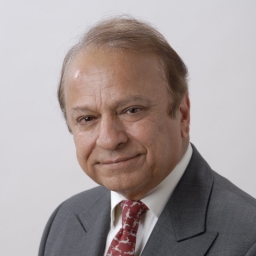 Prepared for the worse
Prepared for the worse
The old probabilistic approach to risk based on past pricing behaviour is no longer enough. The emerging forward-looking approach enjoins investors to be prepared for the worst, via scenario planning. All the more so, as asset prices are likely to reconnect with their fair value, as central banks’ role in artificially inflating markets has crossed the point of diminishing returns.
Amin Rajan will moderate the panel called ‘What will future asset allocation look like?’ The agenda says: “All the crystal balls are broken. Asset allocation is much more about future scenarios and much less about past price behaviours. Risk can be managed with some pre-known probability of outcomes.” Events such a climate change, Covid and the Russian war on Ukraine “have no precedents – the so-called fat-tail events. They are driving investors in the realm of uncertainty. Building resilient portfolios is the key.”
Also taking part in the panel will be Peter Branner, CIO, Abrdn, Sonja Laud, CIO, Legal & General Investment Management, Niklas Ekvall, CEO, Fourth Swedish National Pension Fund (AP4), Olivier Raingeard de la Blétière, CIO, Banque Neuflize OBC and global head of equity – ABN Amro Group.
Kate Webber, head of product strategy, Northern Trust Asset Servicing
Radical innovation reshaping the industry
Combining technological innovations to deliver efficiency, choice, personalisation and insight is the future of our industry. For example, combining AI with data science can allow us to sift through extremely complex data sets and run far-reaching analytics, freeing up humans to focus on other productive tasks. Digital technology is providing customers with opportunities to invest in an on-demand way, similar to how they shop and carry out everyday tasks.
Technological innovation offers our industry a chance to engage in meaningful ways with the new types of customers that demographic trends will create – for example, the generation of women who stand to inherit significant wealth in the US and UK, or the upcoming wave of tech-savvy millennials and Generation Z investors.
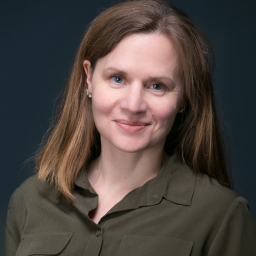 Hyper-personalisation
Hyper-personalisation
It will also drive distribution opportunities. We may see the hyper-personalisation of money and wealth management – potentially for investors to create the types of very customised funds that are currently the preserve of the super-wealthy. Or for metaverse-type visualisation to be deployed to support retail customers in their decision-making, helping make complex topics more relevant and understandable for them. The possibilities really are endless.
Kate Weber takes part in ‘The future of distribution’ panel, which will look at the “radical innovations reshaping the future of money and wealth management”, according to the agenda.
Research will be presented by Liam Martin, director, Broadridge. He will then moderate the panel that also features Killian Lonergan, head of distribution intelligence at Brown Brothers Harriman, Oliver Bilal, Emea head of distribution at Invesco, Carl Palmer, co-CEO at MFEX by Euroclear, and Varun Atre, chief product officer at Calastone.
Fabrizio Zumbo, director, European asset and wealth management research and consulting, Cerulli Associates
Strength in distribution relationships
Building strategic partnerships with fund distributors has become a priority for many asset managers operating in Europe in light of the current industry environment characterised by a high level of rivalry in the space, product proliferation and the presence in many European countries of large vertically integrated actors. The proliferation and commoditisation of fund products in recent years has made it increasingly difficult for managers to compete on price or product alone.
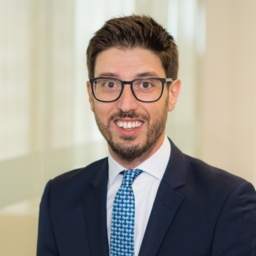 Importance of partnerships
Importance of partnerships
To stand out from the crowd, managers will increasingly need to differentiate their value propositions. In the last few years, we have seen the signing of several new strategic partnerships between asset managers and banks and wealth managers in different countries in Europe with the aim of securing the distribution of their fund products. Cerulli’s research shows that more than half (51%) of manager respondents rated the creation of partnerships as very important in the UK, with 45% and 35% believing the same for the German and Swiss markets, respectively.
Asset managers need to ensure that they stay ahead of the curve by building strong relationships and partnerships with new and relevant distributors in the market as providers that rely solely on traditional intermediaries as a route to the end investor could see their market share gradually erode over time.
Fabrizio Zumbo will moderate the panel called ‘Rethinking partnerships and third-party relationships’. The panel aims to bring together some of the top financial institutions and private banks to discuss the relationship evolution.
Other participants will be Kelly Berkanish, executive director, global partnerships at UBS, Christophe Girondel, deputy CEO at Nordea Asset Management, José Martínez-Sanjuán, global head of fund selection at Santander Private Banking and Giorgia D’Anna, head of global strategic partners at BNP Paribas Asset Management.
Lata Vyas, alternative funds product manager, Brown Brothers Harriman
Private markets: Learning a new game
As the distribution of funds investing in private markets continues to gain momentum, alternative fund managers must adapt to a new ecosystem in order to gain access to private investors.
Private markets are booming, with assets growing at an annual rate of nearly 20% since 2017 and McKinsey reporting that these now stand at $11.7 trillion. Preqin predict these assets should reach $18.3 trillion by 2027.
In a growing trend, private banks, wealth managers and institutional investors show greater interest in private market assets than in the past, driven by their low volatility, higher returns and by the ability to customise investments. This trend has been evidenced by an increase in the number of democratised private-market product launches in Europe, such as ELTIFs. The recently announced ELTIF 2.0 regime is expected to accelerate this growth with a broadening of eligible investments and a simplified distribution process.
In the UK, this growing trend towards democratisation has manifested by defined contribution pension schemes pouring around £1 billion into private markets in 2021, shows MandateWire data, as the search for yield intensifies. The recent launches of LTAFs in the UK, including the first of its kind by Schroders in March and another by the manager in May, creates a new opportunity for DC plan investors to achieve better outcomes by investing in private markets.
While the LTAF and ELTIF 2.0 aim to broaden the opportunity set for private investors seeking to participate in the higher returns associated with private markets that have a lower correlation with the short-term economic cycle, the relative illiquidity of private market investments and the inherent complexity in managing this asset class can be challenging.
It will require mastering a new ecosystem with a focus on three areas: liquidity management, distribution and technology.
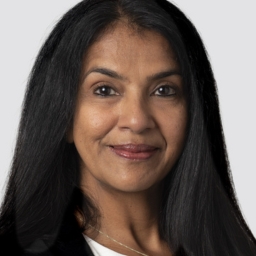 Managing liquidity
Managing liquidity
Private investors may expect a democratised private market fund to behave like a public markets Ucits offering daily dealing.
This is not typical for a private product with quarterly valuation points. While boundaries are being pushed with monthly trading private market funds, daily dealing can be tricky, if not impossible, to achieve with a largely illiquid portfolio of assets. For an asset manager, the liquidity management features for such products comes under intense scrutiny, both by internal risk teams as well as by regulators looking to ensure that managers do not erode value for the entire investor base in the fund on behalf of those who are trying to redeem.
This has required the addition of liquidity management features in products, such as redemption restrictions or thresholds at dealing points as well as diversifying the portfolio composition to include both public and private assets. Regular assessment and the right tools to manage the liquidity features on an ongoing basis is key.
Mastering distribution
The success of these products relies on mastering the distribution channels that were largely built for traditional straight-through processing or online trading.
Accessing private market funds through these channels requires a pivotal shift by alternative managers, many of whom are accustomed to paper-based subscriptions from institutional investors and now must acquire the distribution skills of the so-called traditional fund management industry.
The right technology and automation tools are key for both managers and their service partners to be able to create a scalable operating model that supports a broader distribution of private markets products within the framework of the regulatory requirements. Ultimately this pivot will support ease of access for this growing investor base.
Lata Vyas will take part in the panel ‘Democratisation of private markets’ at FundForum International.
Luke Brereton, global head of client acquisition, GlobalLink & State Street Digital
How is technology leading to new ways of improving outcomes for industry stakeholders?
“Technology has been pivotal in the development of the financial services industry. From structuring to distributing and from custody to regulatory compliance, the process of launching an investment product from start to finish is lengthy and resource-intensive. At the same time, investors are increasingly demanding more tailored products to suit their risk appetite and investment objectives, which adds another layer of complexity.
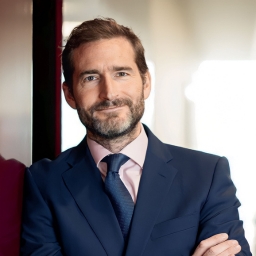
In recent years, distributed ledger technology (DLT) has been shaping a lot of conversations across the industry, particularly discussions on improving outcomes, and there have been several pilots as practitioners look to experiment and test solutions. In short, DLT has the potential to increase efficiency and asset utility while reducing risks associated with traditional processes.
A fully automated asset servicing process using smart contracts means that the number of participants in the value chain between the investment manager and end investor can be reduced, allowing complex, less liquid fund structures to become more mainstream – potentially benefiting investors as well as all parties involved in the financial systems.”
David Genn, CEO, Goji
How do new fund structures and technology revolutionize access to private markets for smaller investors?
Investor allocations to private markets have been growing rapidly over the last decade and are now considered a core component of investment portfolios.
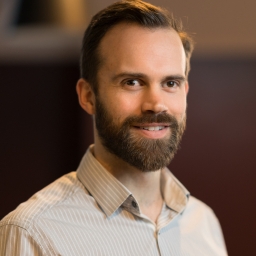
For smaller DC schemes and individual investors to access this important asset class, three barriers need to be overcome:
1. fund structures that are appropriate for non-institutional investors;
2. access to a wide range of funds, and;
3. efficient operating models.
New fund structures like the ELTIF in the EU and LTAF in the UK have been launched with the needs of smaller DC funds and private wealth clients in mind. This enables asset managers to design products that are more accessible to this important pool of capital.
In December 2022, Euroclear announced its intent to acquire Goji, a private market specialist fintech. Together, they are adding private market capabilities to FundSettle, the world’s largest cross-border fund network.
This will enable the 2,000+ distributors on the FundSettle network to access a global universe of private market funds.
The combination of new fund structures and innovative, technology-driven operating models will help revolutionise the distribution of private markets to the benefit of all participants.
Adam Belding, CTO, Calastone
How is technology leading to new ways of improving outcomes for industry stakeholder?
For us, the key technological development taking place today is tokenisation and the digitalisation of assets. Tokenisation will be a change of transformative importance for asset managers, touching all aspects of the work they do. It promises to significantly accelerate the scale of cost reduction and the ways in which more customers can be served with greater choice, convenience and levels of personalisation.
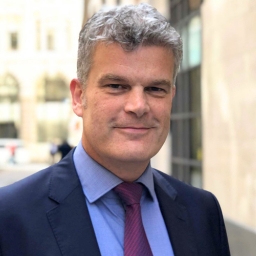 To positively maximise these outcomes, the industry must look to re-evaluate the whole fund structure, applying the technology to the core of the fund and transforming the operation and administration. With tokenising at the asset level, you are bringing both the data and processes underpinning a fund into the same environment, creating an integrated and seamless value chain.
To positively maximise these outcomes, the industry must look to re-evaluate the whole fund structure, applying the technology to the core of the fund and transforming the operation and administration. With tokenising at the asset level, you are bringing both the data and processes underpinning a fund into the same environment, creating an integrated and seamless value chain.
This would mark a sea change in the structure of the industry, but one that will be of benefit to many of its constituents. With the value chain at their fingertips, investment managers will be able to launch more products, more quickly and in more targeted ways. With all data on a common platform, custodians will be able to reconcile information with much greater ease. While for their part, regulators could have access to a much more comprehensive picture of activity than before.
Olivier Portenseigne, CEO, FundsDLT
How is technology leading to new ways of improving outcomes for industry stakeholders?
Retail investors are increasingly expecting improved service and easier access to investment funds, while asset managers are seeking broader retail market reach with lower administration costs. To achieve this goal, various solutions, some very ambitious, have come to the market. It’s still early days of course, but the focus is very much on harnessing emerging technologies such as DLT to drive transformative change and improve outcomes for stakeholders.
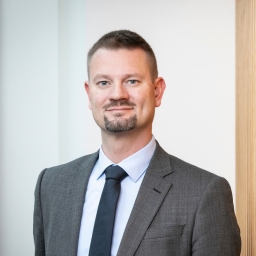
Firstly, Decentralized technology, specifically (DLT), is revolutionizing the industry by unlocking the potential of under-utilized data in the fund distribution chain. The ability to simultaneously have shared data and transaction information creates conditions for operational efficiency. Shared processes across actors reduce duplication and redundancy and thus lower operating costs. All actors in the distribution chain can now effectively share data with higher numbers of retail investors than previously believed achievable.
Secondly, new ways of serving the end investor are emerging. In the traditional model, asset managers typically rely on distribution partners to access large markets and assets at high costs while receiving limited knowledge of the end investor. Now a new generation of digital services facilitates data sharing, a comprehensive understanding of investor needs and paves the way for innovative, investor-centric products and novel distribution models.
Beyond these points, DLT has the potential to create a fully re-engineered, decentralized blockchain-based infrastructure that benefits investors, distributors, and asset managers alike. This next-generation fund distribution ecosystem leverages the power of technology to provide a seamless and transparent experience for all stakeholders.
Paul Ronan, CTO, FE fundinfo
Technology: How is technology leading to new ways technology of improving outcomes for industry stakeholders?
Technology has revolutionised industries across the globe, opening up new possibilities and driving improved outcomes. Advancements have led to the emergence of four distinct levels of sophistication, each contributing to the continuous improvement of industry standards.
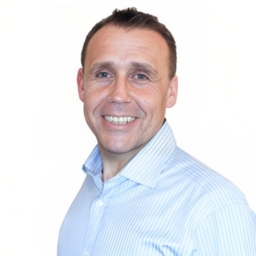 At the foundational level, the widespread adoption of Application Programming Interfaces (APIs) has paved the way for more responsive services. Moving away from traditional file transfer methods, APIs enable standardised communication and collaboration, overcoming challenges and streamlining processes.
At the foundational level, the widespread adoption of Application Programming Interfaces (APIs) has paved the way for more responsive services. Moving away from traditional file transfer methods, APIs enable standardised communication and collaboration, overcoming challenges and streamlining processes.
The advent of cloud services has empowered the industry to explore solutions before committing to them. This “try-before-you-buy” approach facilitates a best-of-breed model, where services can seamlessly converge around market standards.
Data analytics platforms have become a game-changer. Coupled with the renewed investment in machine learning, industries can now extract meaningful trends from vast amounts of data. This allows stakeholders to make informed decisions, optimise operations, and uncover hidden opportunities.
Finally, at the forefront of technological innovation is Generative AI, which enhances the client experience and accelerates the feedback loop. By leveraging data insights, services can be interconnected in intuitive ways, the result of which is a continuous cycle of generating more data insights, further refining services, and propelling industry stakeholders toward unprecedented levels of success.
Sophie Devillers, head of sustainable finance, securities services, BNP Paribas
ESG data: a long road, with further to go
If we look back five years, the biggest ESG challenge then was the lack of robust data. Today, the amount of ESG data has increased hugely, but so has inconsistency. This makes it more complex for institutional investors to navigate the ESG landscape and integrate data effectively.
The true goal here is standardisation. As an industry, we need access to broader data utilities that help to standardise disclosure and create more homogenous calculation methodologies. This is where initiatives around public data utilities are essential. Proposals such as the European Single Access Point (ESAP) in the EU and The Net Zero Data Public Utility globally will be fundamental to creating clearer indicators for impact.
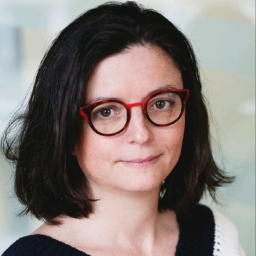
Integrating ESG across the business: the true North Star
As the world’s fifth largest custodian, our business is vast and complex, and we must ensure that sustainability is threaded through every strand of our operations. We strive to incorporate ESG data in all our decision-making processes, infrastructure, and control frameworks. We must also keep ESG as a central focus, not just for our products and transactions but for our whole ecosystem and value chain.
ESG data is also key to helping our clients accelerate their sustainability ambitions. It’s vital that institutional investors look across their business, fund lifecycles and pre and post-trade processes to make sure that their decisions and infrastructure are completely engineered around sustainability. At the moment, this requires significant investment and resources, but through more harmonisation, innovative approaches and collaboration across firms, we can contribute to the democratisation of ESG data and ensure that it is an enabler for a just transition.
Pedro Palandrani, director of research, Global X
In your view, what are the radical innovations reshaping the future of money and wealth management?
A key question facing investors and money managers is whether history is set to repeat itself, or whether they might need to prepare for a very different future. This is where the concept of thematic investing comes in—a forward-looking approach that identifies the powerful structural trends and innovations shaping our economic future and seeks to find the investments set to benefit from those trends.
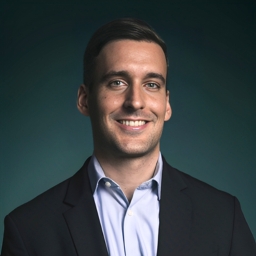 A thematic approach to investing can provide investors with access to a wide range of new paradigms across sectors. Within raw materials, for example, investors can consider the disruptive materials such as lithium, copper, and rare earth elements powering next-generation clean technologies such as electric vehicles, solar panels, and hydrogen fuel cells. Within industrials, thematic investors may look toward the AgTech innovations in precision agriculture and robotics & automation reshaping the global supply chains. And within information technology, thematic investing has an eye toward disruptive technologies such as the Internet of Things and new cybersecurity platforms.
A thematic approach to investing can provide investors with access to a wide range of new paradigms across sectors. Within raw materials, for example, investors can consider the disruptive materials such as lithium, copper, and rare earth elements powering next-generation clean technologies such as electric vehicles, solar panels, and hydrogen fuel cells. Within industrials, thematic investors may look toward the AgTech innovations in precision agriculture and robotics & automation reshaping the global supply chains. And within information technology, thematic investing has an eye toward disruptive technologies such as the Internet of Things and new cybersecurity platforms.
Thematic investing will reshape the future of money management in part because this innovative approach to asset allocation increasingly appeals to younger investors. A Global X survey last year found that while 24% of the general population expressed very high levels of interest in thematic investing, that share rose to 50% among millennials.
© 2023 funds europe





